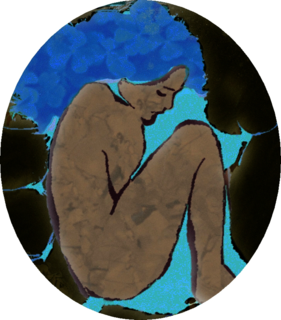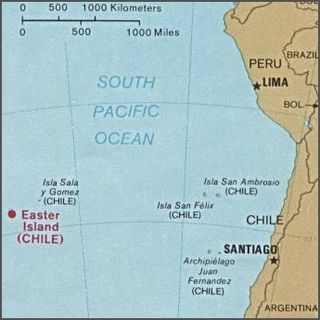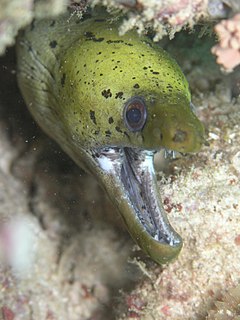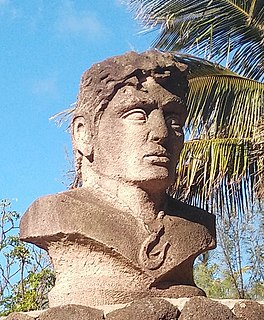Related Research Articles

The Polynesian narrative or Polynesian mythology encompasses the oral traditions of the people of Polynesia together with those of the scattered cultures known as the Polynesian outliers. Polynesians speak languages that descend from a language reconstructed as Proto-Polynesian - probably spoken in the Tonga - Samoa area around 1000 BC.
Tangaroa is the great atua of the sea, lakes, rivers, and creatures that live within them, especially fish, in Māori mythology. As Tangaroa-whakamau-tai he exercises control over the tides. He is sometimes depicted as a whale.
Ta'aroa is the supreme creator god in the mythology of the Society Islands of French Polynesia. While the use of the ʻeta is appropriate given the pronunciation of his name, as is typically the case with Tahitian words it is often omitted in practice. He then created the queen of all nations

In Hawaiian mythology, Laka is the name of two different popular heroes from Polynesian mythology.. Lengthy legends of their exploits extend throughout the islands, and the kings of Tahiti and Hawaiʻi claimed them as their ancestors.

Rapa-Nui is a 1994 American historical action-adventure film directed by Kevin Reynolds and coproduced by Kevin Costner, who starred in Reynolds's previous film, Robin Hood: Prince of Thieves (1991). The plot is based on Rapanui legends of Easter Island, Chile, in particular the race for the sooty tern's egg in the Birdman Cult.

In Cook Islands mythology, Varima-te-takere also called Vari, was the primordial mother of the gods and mortals.

The Society Islands are an archipelago located in the South Pacific Ocean. Politically, they are part of French Polynesia, an overseas country of the French Republic. Geographically, they form part of Polynesia.
Rata, in Tahitian mythology, is said to have become king of Tahiti when his uncle, king Tumu-nui, and his father Vahieroa are swallowed by a great clam while they are on their way to Pitcairn. When he reaches adulthood, Rata plans to avenge his father. As in the Tuamotuan version, Rata identifies a tree to build his canoe, but it is protected by forest elves. After he captures them they build it for him in a single night. While en route for Pitcairn, Rata and his crew are sucked down into the same clam, but they use their spears to cut the monster open. They rescue the remains of Rata's father and uncle and bury them back in Tahiti. After recovering from their adventure, Rata sets out for further adventures. See also Aremata-Popoa and Aremata-Rorua.

Māori mythology and Māori traditions are two major categories into which the remote oral history of New Zealand's Māori may be divided. Māori myths concern 'out of this world' tales relating to the origins of what was the observable world for the pre-European Māori, often involving gods and demigods. Māori tradition concerns more folkloric legends often involving historical or semi-historical forebears. Both categories merge in whakapapa to explain the overall origin of the Māori and their connections to the world which they lived in.
In Tahitian mythology, Vahieroa is a son of Tafa'i and his wife Hina, and is born at his father's house in the Tapahi hills of Mahina in north Tahiti. He weds Maemae-a-rohi, sister of the ruling chief Tumu-nui.
Tangaloa was an important family of gods in Tongan mythology. The first Tangaloa was the cousin of Havea Hikuleʻo and Maui, or in some sources the brother or son or father of them. He was Tangaloa ʻEiki, and was assigned by his father, Taufulifonua, the realm of the sky to rule.
Faumea is a figure in Polynesian mythology, specifically that of the Tuamotus archipelago of French Polynesia, where she is regarded as an "eel-woman". The sea god Tangaroa encounters her when he sails to her island. In addition to being an eel-woman, Faumea has eels within her vagina which eat men, reflecting the folk concept of vagina dentata. However, Faumea teaches Tangaroa how to lure the eels out and they have sex. Faumea bears Tangaroa two sons: Tu-Nui-Ka-Rere and Turi-A-Faumea.

Easter Island was traditionally ruled by a monarchy, with a king as its leader.

Rapa Nui mythology, also known as Pascuense mythology or Easter Island mythology, refers to the native myths, legends, and beliefs of the Rapa Nui people of Easter Island in the south eastern Pacific Ocean.

Geologically one of the youngest inhabited territories on Earth, Easter Island, located in the mid-Pacific Ocean, was, for most of its history, one of the most isolated. Its inhabitants, the Rapa Nui, have endured famines, epidemics of disease and cannibalism, civil war, environmental collapse, slave raids, various colonial contacts, and have seen their population crash on more than one occasion. The ensuing cultural legacy has brought the island notoriety out of proportion to the number of its inhabitants.

'Oro is a god in Tahiti and Society Islands mythology. The veneration of Oro, although practiced in varying intensity among the islands, was a major religion of the Society Islands in the 17th and 18th centuries, especially Tahiti, Tahaa, Moorea, and Raiatea. On Tahiti, 'Oro was the main deity and the god of war. The secret society of Arioi was closely linked because of its rites. On the Marquesas Islands, 'Oro bore the name Mahui.

The Kingdom of Tahiti was a monarchy founded by paramount chief Pōmare I, who, with the aid of British missionaries and traders, and European weaponry, unified the islands of Tahiti, Moʻorea, Tetiaroa, Mehetia and at its peak included the Tuamotus, Tubuai, Raivavae and other islands of eastern Polynesia. Its leaders were Christian following the baptism of Pomare II. Its progressive rise and recognition by Europeans allowed Tahiti to remain free from a planned Spanish colonization as well as other European claims to the islands.

Tahiti and Society Islands mythology comprises the legends, historical tales, and sayings of the ancient people of the Society Islands, consisting of Tahiti, Bora Bora, Raiatea, Huahine, Moorea and other islands. It is considered a variant of a more general Polynesian mythology, developing its own unique character for several centuries. The religion was officially suppressed in the 19th century, and ultimately abandoned by the natives in favor of Christianity.

Tuvaluan mythology tells stories of the creation of the islands of Tuvalu and of the founding ancestors of each island. While on some of the islands there are stories of spirits creating the islands, a creation story that is found on many of the islands is that te Pusi mo te Ali created the islands of Tuvalu; te Ali is believed to be the origin of the flat atolls of Tuvalu and te Pusi is the model for the coconut palms that are important in the lives of Tuvaluans. The strength of this belief has the consequence that Moray eel are tapu and are not eaten.

Siméon or Timeone Riro ʻa Kāinga Rokoroko He Tau was the last ‘ariki (king) of Rapa Nui from 1892 until his death. He ruled the island during a brief period of indigenous autonomy between Chile's initial annexation in 1888 and the country's reassertion of colonial authority in 1896. Riro died unexpectedly during a diplomatic trip to Chile to discuss the island's sovereignty with colonial authorities, leading to suspicions that he had been poisoned. Such theories were never proven, although Historians in Santiago Chile keep secret evidence apprehended in the investigation of his death 1898.
References
- ↑ Monberg, Torben (1956). "Ta'aroa in the creation myths of the Society Islands". Journal of the Polynesian Society. 65 (3): 253–281. Retrieved 25 November 2021.
- ↑ Te Rangi Hiroa (1964). Vikings of the Sunrise. Whitcombe and Tombs Limited. pp. 72–75 – via NZETC.
